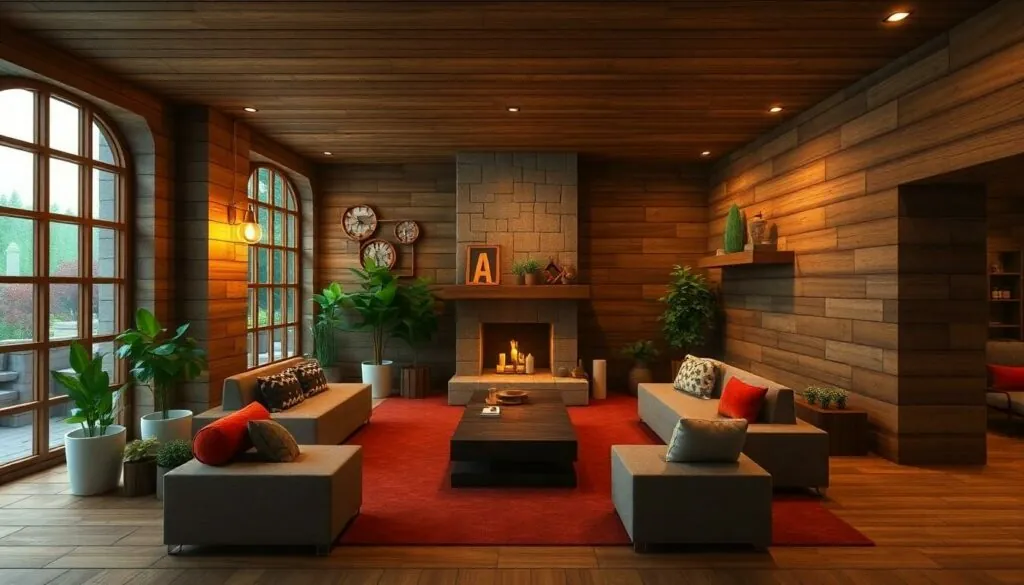Choosing the right college for interior design can feel like picking out the perfect throw pillow—one wrong choice and the whole vibe is off. With so many options out there, it’s crucial to find a school that not only nurtures creativity but also equips students with the skills to turn their wildest design dreams into reality.
Imagine walking into a classroom where your ideas can flourish, surrounded by inspiring faculty and like-minded peers. The right college can be a game-changer, providing the tools and connections needed to thrive in a competitive industry. So, let’s dive into the world of interior design education and uncover the best colleges that’ll help aspiring designers turn their passion into a successful career. After all, who wouldn’t want to design spaces that make people go “Wow!”?
Table of Contents
ToggleOverview of Interior Design Education
Interior design education plays a crucial role in shaping an individual’s skills and knowledge. Degree programs typically focus on aesthetics, functionality, and safety in design. Students gain expertise in color theory, materials, space planning, and design technology.
Various pathways exist for those pursuing this field. Associate degrees often provide foundational skills, while bachelor’s degrees offer a more in-depth understanding of design principles. Graduate programs cater to experienced designers, enhancing their skills and competitiveness.
Accreditation matters in interior design programs. Schools accredited by agencies such as the Council for Interior Design Accreditation (CIDA) meet established educational standards. Graduates from accredited institutions benefit from recognition by employers and professional organizations.
Hands-on experience is integral to interior design education. Many programs include internships that enable students to apply theories in real-world settings. Networking opportunities during internships help students form valuable industry connections.
Curriculums often emphasize sustainable design. Educators increasingly incorporate environmentally friendly practices into coursework. Understanding sustainability is vital, given the industry’s shift towards eco-conscious design solutions.
Technology integration also enhances interior design education. Software programs such as AutoCAD and SketchUp are commonly used in projects. Familiarity with design tools offers students an edge in a highly competitive job market.
Studying interior design prepares individuals for various career paths. Potential roles include residential designer, commercial designer, and exhibit designer. Each role offers unique challenges and rewards, allowing graduates to specialize based on interests and strengths.
Top Criteria for Selecting Colleges

Choosing a college for interior design requires careful consideration of several key factors. Evaluating each criterion helps ensure that students find programs best suited to their career goals.
Accreditation and Reputation
Accreditation signifies that a college meets high educational standards. Programs recognized by the Council for Interior Design Accreditation enhance graduates’ employability. Reputation also plays a crucial role; researching alumni success and awards reflects program quality. Noteworthy colleges often boast rankings in national surveys, providing insight into their standing in the industry. Schools with positive reviews from current students indicate a supportive learning environment.
Curriculum and Program Structure
Curriculum focuses on critical topics like design theory, spatial planning, and technology tools. An effective program includes a balance of theoretical knowledge and practical projects. Cohesive structures that offer both associate and bachelor’s degrees allow for flexible educational paths. Advanced studies or specialized courses in sustainability prepare students for industry trends. Additionally, a focus on internship opportunities helps students gain real-world experience and build professional networks.
Faculty Expertise
Experienced faculty members bring a wealth of knowledge to the classroom. Many hold advanced degrees and have substantial industry experience, providing students with valuable insights. Faculty connections to the design community often lead to networking opportunities. Instruction that combines mentorship with hands-on guidance enhances the overall educational experience. Students benefit from engaging with professionals who stay current with design advancements and innovations.
Good Colleges for Interior Design
Several colleges stand out for their interior design programs, combining creativity with technical skills. Each institution offers unique specialties, ensuring diverse opportunities for aspiring designers.
College A: Overview and Specialties
This college features a robust curriculum that emphasizes innovative design practices. Students engage with cutting-edge technology and sustainable materials. Courses include extensive hands-on projects and collaboration with industry professionals. Students appreciate the strong internship network, which connects them with top design firms. Additionally, accreditation by CIDA adds value to the degree, assuring employers of graduates’ competencies.
College B: Overview and Specialties
This college offers a comprehensive program focusing on both aesthetics and functionality in design. The faculty brings extensive experience, guiding students through real-world applications of design theory. Course offerings include space planning and advanced color theory, crucial for successful design projects. Networking opportunities abound through industry partnerships, helping students secure internships and jobs post-graduation. The program’s commitment to sustainability prepares students for environmentally conscious design challenges.
College C: Overview and Specialties
This college excels in blending creativity with critical thinking skills. Its courses cover a wide range of topics, including materials, acoustics, and lighting design. Evaluation methods focus on practical applications, ensuring students develop a well-rounded skill set. Students benefit from access to state-of-the-art design labs and collaborative workspaces. The program’s strong reputation and high alumni success rates further enhance its appeal to prospective students.
Career Opportunities After Graduation
Graduates from interior design programs enter a vibrant job market filled with diverse opportunities. Interior designers work in residential settings, creating personalized living spaces. Those interested in commercial design find positions within businesses, crafting workplaces that enhance productivity and brand identity. Exhibit design also offers a niche for graduates, as they design engaging exhibition spaces for events and trade shows.
Freelancing remains a popular path for many designers, facilitating flexible work arrangements and allowing for personal project selection. Some professionals specialize in project management or consulting, guiding clients through the design process. Sustainable design practices lead to increasing demand for eco-conscious designers, reflecting industry trends focused on environmental responsibility.
Real-world experience gained through internships proves invaluable. Many employers prioritize candidates with hands-on training, as it demonstrates readiness to tackle industry challenges. Networking opportunities during these internships often lead to job offers, creating professional connections that can last a lifetime.
Strong communication skills enhance career prospects, as designers frequently collaborate with architects, contractors, and clients. Problem-solving abilities hold equal importance, allowing designers to navigate complex projects effectively. Technology proficiency in design software like AutoCAD or Revit further increases employability, as these tools are standards in the industry.
Roles such as design director or studio manager become attainable as professionals gain experience and establish a solid portfolio. Continuous education is essential for career advancement, with many designers pursuing certifications to stay updated on industry trends and best practices. By leveraging their skills and experience, interior design graduates can build fulfilling careers that fulfill both creative passion and practical needs.
Choosing the right college for interior design is a pivotal step for aspiring designers. The right program not only nurtures creativity but also equips students with the skills needed to thrive in a competitive landscape. With a focus on practical experience and innovative practices, these colleges prepare graduates for diverse career paths.
As the industry evolves towards sustainability and advanced technology, graduates from top programs are well-positioned to meet emerging demands. By investing time in research and selecting an accredited institution, students can unlock their potential and embark on a fulfilling journey in the world of interior design. The future is bright for those ready to transform their passion into a successful career.





